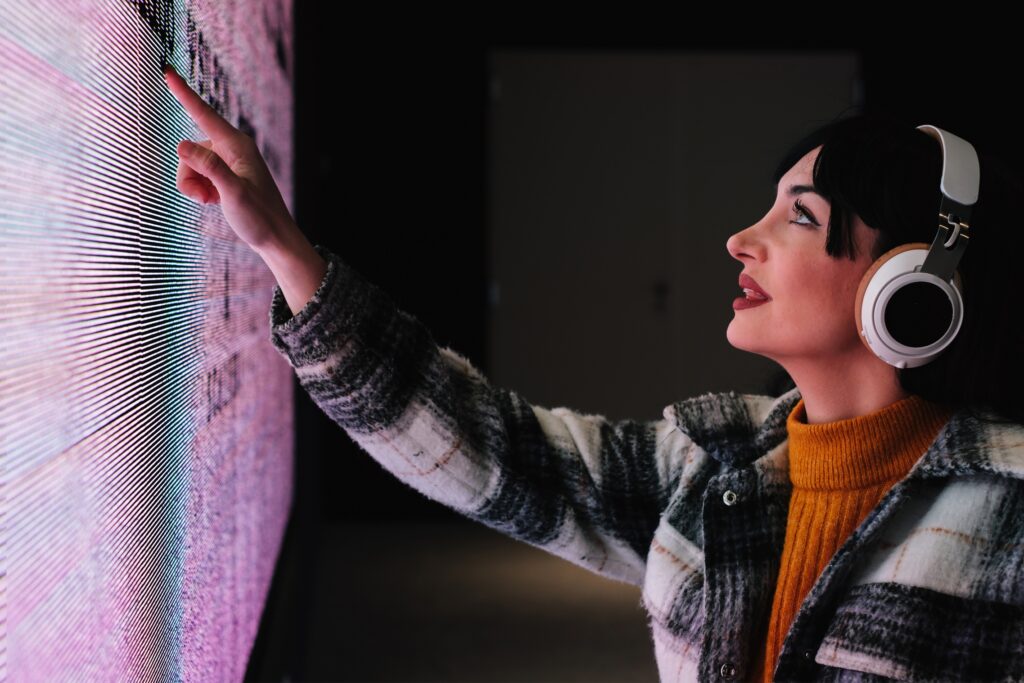Aptly named, Ecosystem is a green solutions innovator that specialises in retrofitting existing buildings to increase energy efficiency and creating new eco-friendly structures. Under CEO André Rochette’s leadership, Ecosystem has grown from a basement startup to a flourishing industry leader with offices in Quebec City, Montreal, Toronto and New York City. The firm’s trademark out-of-the box thinking and holistic approach to energy management have generated more than $150 million in savings for its diverse range of public- and private-sector clients.
In our push to become a more responsible agency, JPC has undergone a number of eco-friendly policy changes to seriously impact our carbon footprint, across our everday business, our partner supply chain and even our commitment to forgo air travel whenever possible. We converse regularly with industry experts in sustainability to enrich our insight into what drives green business in today’s economic climate. And while we look to improve how our company of 20 people does business, we want to shine a light on the companies who do the heavy lifting in the space of sustainability, creating solutions that can impact our world of 7 billion.
We were able to catch up with Ecosystem CEO, and Winner of Ernst & Young Entrepreneur of the Year, André Rochette, as he shared with us how his fresh-out-of-school “naiveté” led to an innovative business model in energy efficiency.
From 1993 – 2000, the company’s growth was limited, because people hadn’t yet recognised the importance of energy efficiency. What innovative ways did you use to engage with the audience?
I had the chance to find a creative partner with innovative solutions people hadn’t heard of before. We introduced a brand new business model, which allowed us to bring forward projects with aggressive monetary paybacks, reducing the payback timeframe by 2-3 years. People weren’t doing it for the planet; they were doing it for the cost savings.
In the case of institutional clients, back then, when the government was cutting operating budgets all the time, access to high levels of savings was very attractive. There were tons of reports and studies on the shelves, yet nobody acted on them in retrofit projects and actually guaranteed results.
Can you tell us about your innovative business model? How is it different from the traditional model?
21 years ago, I was a kid fresh out of school, I thought if you are going to design and build a solution for a client, then naturally you would guarantee the results. Perhaps I was young and naïve, I did not think about the potential risks. As it turned out, this was an innovative way to do business.
In construction, everyone operates in silos. The traditional model is where a client has to deal with multiple parties (architecture company, engineering company, construction company, etc.) through different stages of property development. At each stage, you would be challenged by the lowest bidder, for architecture, engineering, construction. But the addition of the lowest bidders is a far cry from being the greatest value. Our business model is called “Integrated Energy Performance Contracting”. This means one company, in this case, Ecosystem, manages the project from start to finish. It is the single point of contact with the client, and guarantees 3 things: energy savings, government incentives, and construction costs.
If a project will cost you $30,000 to save $15,000 a year, we would stand behind the numbers. Clients like this model because it reduces their risk, and allows us to align with their business goals. We would lose money if we don’t reach our targets.
How do you foster a culture of innovation in the business?
We try to do better every day. One thing we do with the biggest impact is: we allow people to fail. We give a lot of opportunities for people to take initiatives. With a bottom-up management structure, we allow our staff to take ownership, take risks, and make decisions. Nobody’s been fired here for making a mistake. If people are to decide what is best for the company, we want them to learn from failures.
Second, we manage by strengths. We have lots of examples of people with very narrow but very strong strengths. My partner is like that. He’s a technical genius, but not a good manager. He’s great with everything blue, but red and yellow, not so much. We create positions in the company where our people can perform and be appreciated for what they’re great at.
In a world where almost every business is a self-proclaimed innovator, how do you communicate that you’re more innovative than your competitors?
Tough question. At end of the day, people see innovation in the results. We brag about results and the projects that we’ve done. We want people to realise there’s tremendous potential for energy efficiency in buildings. When it comes to sustainability, people often focus on how we can reduce carbon emissions, produce electric cars, yet when people get to buildings, they fail to realise there’s as high as 50% savings potential for building energy consumption.
Of course, you can’t reach stellar results with the same recipe. The traditional model will yield the same results. The “collection of the lowest bidders” formula doesn’t work. History has demonstrated these types of contracts tend to limit innovation.
We must go beyond the existing recipe to lead to more efficient buildings. The worst buildings are sometimes the newest, even with green tags attached, they are energy guzzlers.
People have to be incentivised to innovate. Without the right incentives, innovation is limited. With this integrated, single-point of contact project delivery business model, we have to be committed to results beyond expectations. That’s our incentive to innovate.
Where do you see the 2-3 biggest trends in energy efficiency for the next 3-5 years?
The trends are region specific based on utility cost fluctuations. For places like New York and Toronto, where there’s great availability of natural gas, and expensive electricity, CHP cogeneration combining heat and power is a great solution. It’ll be an even bigger trend in the future.
In Europe, steam has mostly been eliminated to heat buildings. It’s catching on for the rest of the world. Steam is inefficient; fossil fuel is cheap. The overall inefficiency of steam will kill it in one or two decades.
Another trend is heat pumps. Even though there’s still a lot of mileage to cover, heat pumps remain an efficient way to go.
For lighting, LED is almost ready for exterior applications in buildings. That technology is taking giant steps every day. Conversion of all the lighting will have a huge impact on building energy efficiencies.
What energy efficient tips would you give businesses in their day-to-day operations?
Businesses often take their energy bills for granted. I’d say, think again. When we showed our recent client, a hospital in New York, that we’ve actually reduced energy spend by 40%, they were overjoyed. If we had tried to sell that two years ago, they would have said, “You can’t run the same facility with 40% less energy”. People often fail to realise, a lot of energy being used today is wasted.
Invest in infrastructure in buildings. Mix asset renewal with capital investment. Say you’re a university campus, and you’re developing a new building. The new building will require more heat in the winter and more AC in the summer. But what if you could free up capacity from other buildings and redirect it to the new building? Use what you have paid for already, harvest that wasted energy to feed the new building. You can have the same comfort with less energy consumption. You just need to first challenge your thinking.
Our interview with Andre Rochette is one of many inspirational features of the JPC “Thought Leadership Interview” series, where we reach into our extensive network of thinkers, doers, future gazers, business leaders, book authors, innovators and experts who are first in their fields to share their insights, wisdom, and game-changing perspectives on the world we live in today.

